After World War II, militaries worldwide began a reevaluation of amphibious warfare. The development of the atomic bomb had in theory made the massed invasion fleets of WWII obsolete, and the search began for new ways of putting troops ashore, hampered by the strained finances of the postwar world. Of course, when war did come to Korea, traditional amphibious warfare came back one last time.
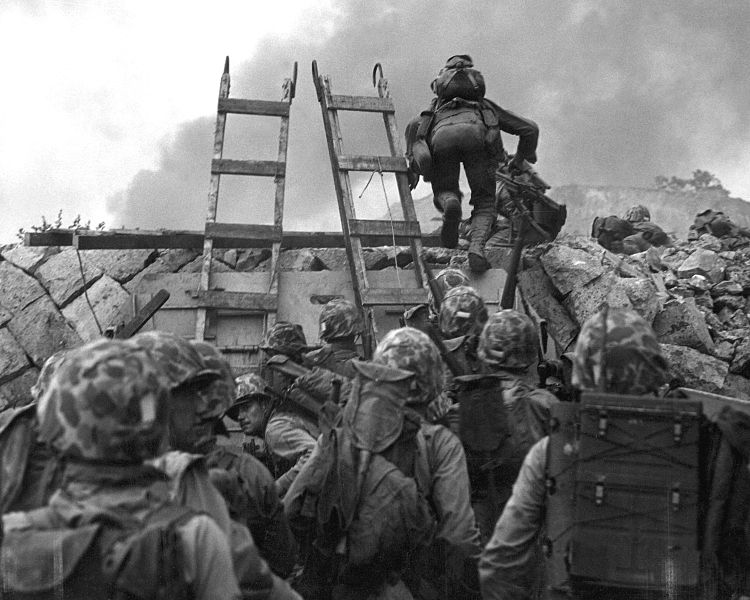
Marines crossing the sea wall at Inchon
When the North Koreans launched their drive south in June of 1950, they pushed the South Koreans, and the United Nations forces supporting them, into the Pusan Perimeter in the southern tip of the Korean Peninsula. As more UN forces reached the Far East in August, most expected Douglas MacArthur to push them back in a conventional offensive. Instead, he chose to launch an amphibious landing at Inchon, near the capital of Seoul and over 150 miles from the allied lines. This was an incredible gamble. MacArthur was committing limited forces in an environment with narrow, twisting channels, high sea walls, and the largest tidal range in Asia. However, he believed that the North Koreans would think it was too dangerous and not be expecting the landing.
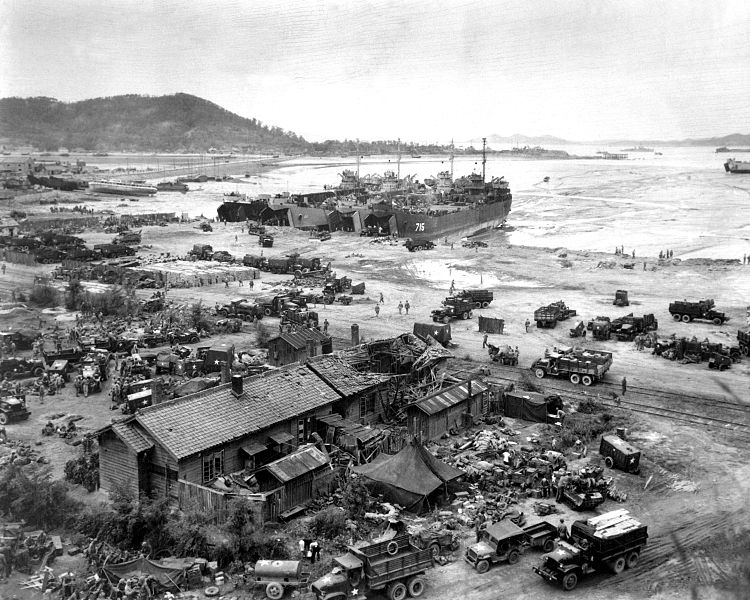
Ships unloading at Inchon
Thanks in large part to an extensive deception operation and a daring scouting mission ahead of the invasion, it was a total success. Elements of the 1st Marine Division secured Inchon with only minor casualties, precipitating the drive north by the UN forces. It was a brilliant stroke, totally upsetting the balance of the war. UN forces reached deep into North Korea before the Chinese intervened, driving them back down near the old border, where the war would stalemate for the next two years.
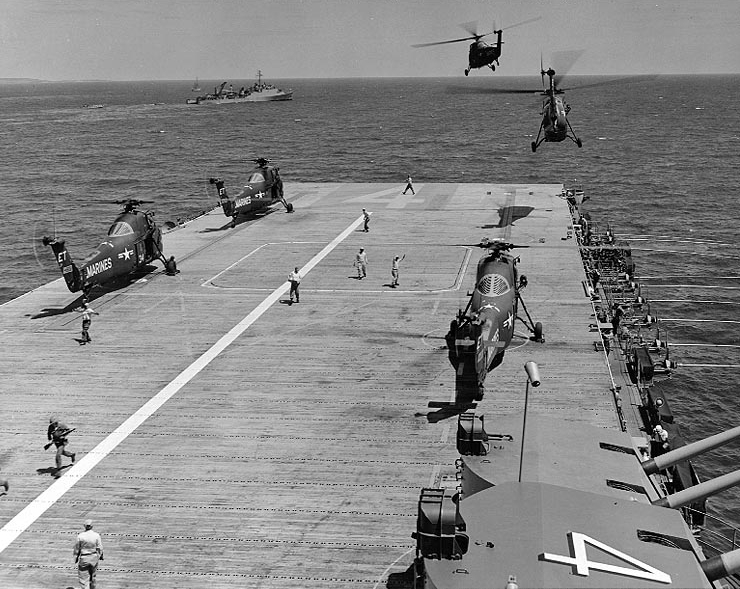
UH-34 helicopters operating from USS Boxer
During and after the war, new amphibious doctrines were developed to allow invasions during the atomic age. The most prominent development came in the form of the helicopter, and the resulting tactic was known as vertical envelopment. Because helicopters, particularly in the 1950s, couldn't carry heavy cargo ashore, efforts were made to speed operations over the beach as well. At the same time, the increasing speed of submarines and a desire to work more effectively with fleet units lead the US to increase the speed of the amphibious fleet to 20 kts. The LSTs of WWII were limited to about 11 kts, and even the faster ships could rarely do more than 15.
The result was a new generation of specialized amphibious ships. The basic amphibious transports of WWII, APAs and AKAs1 had been converted civilian designs. The new ships were instead designed from the start as amphibious vessels, and incorporated several different sets of features in one.

LPD HMS Fearless in 1982
Perhaps the defining ship of this generation is the LPD. This is often interpreted as "Landing Platform Dock", but it's more likely to have come from AP/LP (Transport, Personnel) and a D for dock.2 Essentially, it's an all-in-one landing ship intended to carry troops and some vehicles and land them via landing craft carried in the well deck. A small flight deck is usually fitted as well, intended to give some capability to send troops ashore via helicopter.
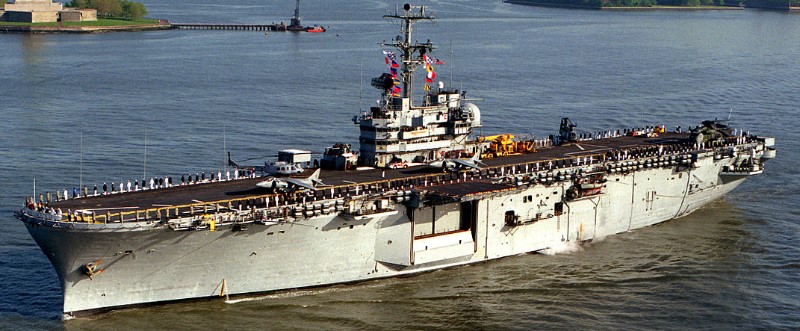
USS Guadalcanal (LPH-7)
The complement to the LPD was the LPH. The first of these were surplus aircraft carriers, converted to carry troops and the helicopters to send them ashore. Later, several countries began to build dedicated ones, which were generally better-adapted to the problems of carrying troops. Loaded troops are bulkier than regular sailors, requiring wider corridors, and their berthing spaces could be laid out much more efficiently than they could on previous LPHs. The great drawback of the LPH was that it could only land its troops when the weather was suitable for flying helicopters, and early helicopters were hampered much more by weather than were landing craft. In some cases, LPHs were unable to land troops when needed, and the last American one, Inchon, was fitted with davits for LCVPs.
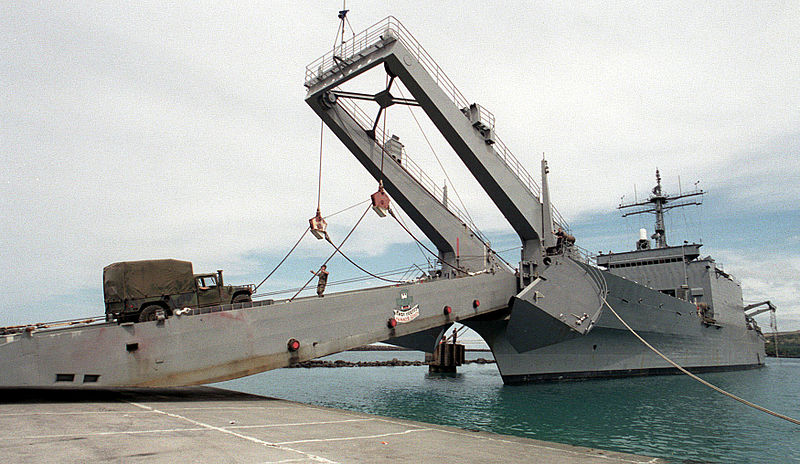
Newport class LST
Fast LSDs3 were also built, focusing on cargo and carrying landing craft for other ships to complement the troop-carrying LPDs. But the really interesting aspects of this generation were the ongoing attempts to create a fast LST. The problem is that an LST needs to be of shallow draft forward to be able to beach in a reasonable amount of water, while high speed needs a deep hull and a sharp bow. A number of different and innovative designs were drawn up. In some cases, the ships were designed with forward-facing propellers, and were intended to back onto the beach, unloading over the stern. Others were intended to carry and regurgitate pontoon causeways. The eventual solution chosen, which resulted in the Newport class LST, was a 110' bow ramp suspended by a davit.
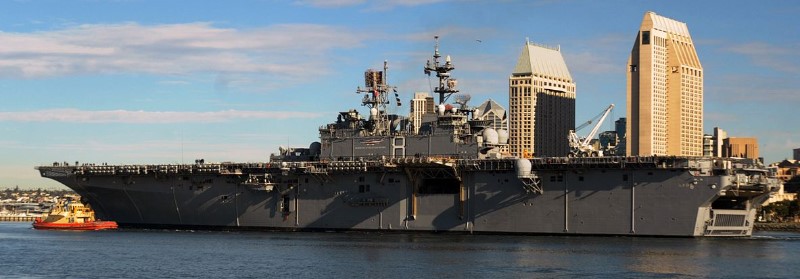
USS Makin Island (LHD-8)
During the 60s, the limitations on LPH operations caused the US to develop the last major type of amphibious ship, the LHA/LHD.4 These were ships that combined the helicopter capacity of the LPH with a well deck. These ships, though easily mistaken for aircraft carriers, are not. Their design is specialized to move troops ashore, and they lack the features you would expect aboard a specialized carrier, such as a ski-jump for STOVL aircraft.
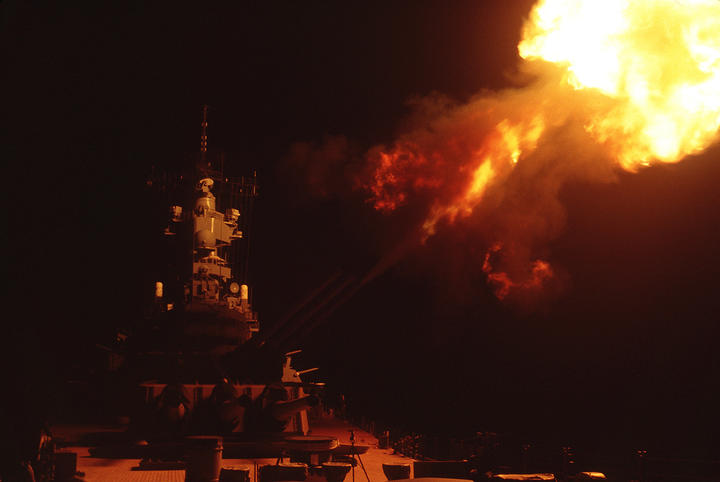
Wisconsin providing fire support during Desert Storm
Very few of these ships were ever used in a big invasion, although they gave sterling service shuttling Marines to various crises around the world. In Vietnam, the threat of American amphibious invasion kept troops in the north, and Norman Schwartzkopf used the same threat to pin troops down in Kuwait where they could be destroyed by the Missouri and Wisconsin.5
The most famous amphibious invasion of the late 20th century was the British liberation of the Falklands. The British launched a force on incredibly short notice to remove the Argentinian force which had occupied the Falklands. Despite many setbacks, the Royal Marines and Paras successfully recaptured first South Georgia, an even more isolated island, and then went ashore at San Carlos in the Falklands themselves, eventually crossing the island and forcing the Argentinian defenders to surrender.
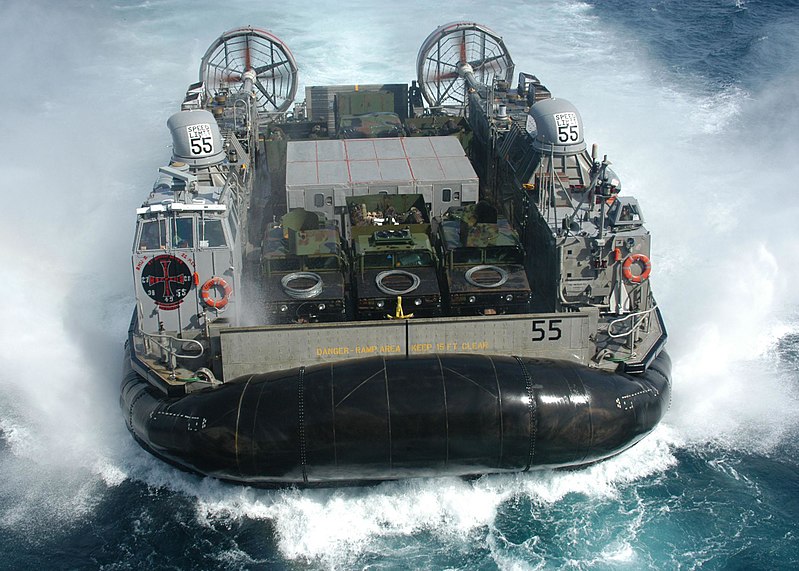
Landing Craft, Air Cushioned
During the later years of the 20th century, the increasing threat of anti-ship weapons forced amphibious ships even further offshore. This required higher speeds of the various transport elements, resulting in the development of the V-22 Osprey and the Landing Craft, Air Cushion, and the abortive Expeditionary Fighting Vehicle. The in-service systems give unprecedented range and speed to amphibious operations. The LCAC also allows forces to be put ashore in areas inaccessible to conventional landing craft, and for troops to move inland before unloading.
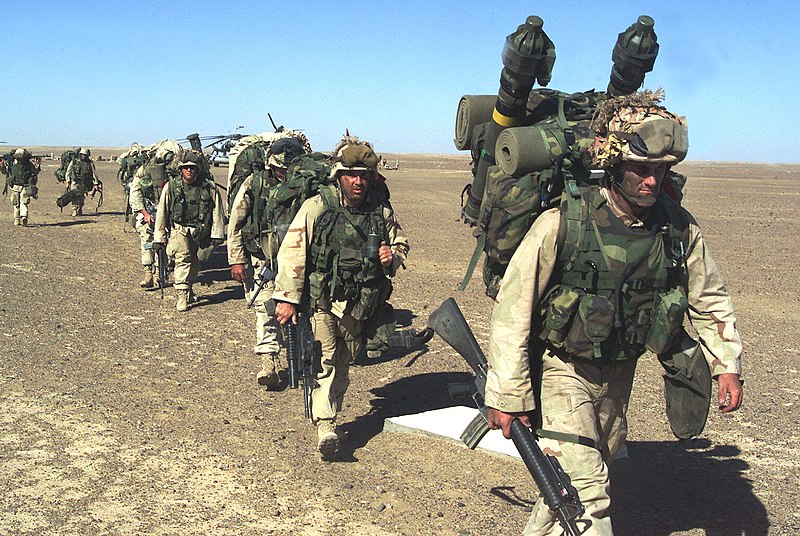
Marines of the 15th MEU in Afghanistan
The 21st century has seen only one major amphibious operation, during the initial American invasion of Afghanistan. This marked a major milestone, as the first amphibious invasion of a landlocked country. The 15th Marine Expeditionary Unit, operating from the Arabian Sea, provided the first conventional ground units in the country in late 2001. In recent years, the Navy and Marines have been taking a new look at how amphibious mobility can help counter the threat of China, although the results are not yet clear. A lesser operation occurred in 2022, when Russia landed troops on the Ukrainian coast as part of its invasion of that country, although details are not yet clear.
Amphibious warfare remains a critical part of a major power's capabilities today. While the days of landing troops into the teeth of enemy defenses are probably over, improvements in technology might allow an assault force to outflank defenses instead. And the troops aboard can also be used for disaster relief, peacekeeping, or dealing with the crises that occasionally concern the US and its allies around the world.
1 Attack Transports (Personnel) and Attack Cargo Transports respectively. Yes, I know the acronyms don't match, but that's the Navy for you. ⇑
2 This should not be confused from the former APD, converted destroyers that carried troops. At some point, most landing ship designations swapped A for L, but not that one. ⇑
3 Landing Ship Dock, a type developed during WWII. ⇑
4 The designation scheme here is rather confusing. The original LHAs of the Tarawa class were serious procurement disasters, and I suspect that's why the follow-on Wasp class was designated LHD instead, despite being basically the same. Of course, the recent America class doesn't have a well deck because of the increasing importance of helicopter lift, so they went back to LHA, although it really should have been LPH. Well, the first two units don't. Later ones will, at least partially to prevent Congress from mistaking them for aircraft carriers. ⇑
5 Yes, I did have to slip in a battleship connection. Unfortunately, I wasn't able to find a Canadian one for dndnrsn. ⇑

Recent Comments